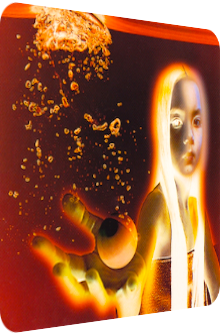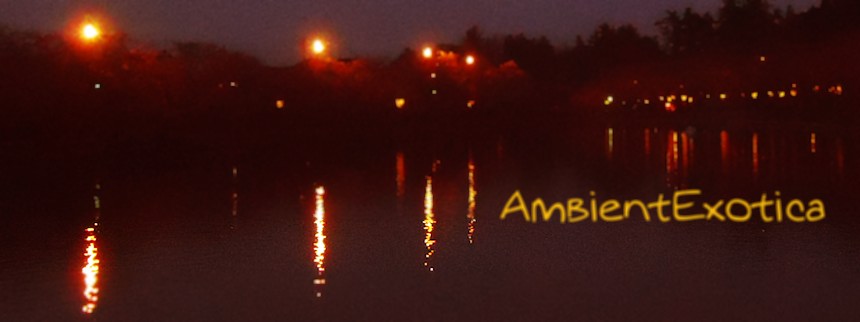
Future Sound Of London
Lifeforms EP
1994
The now legendary electronic music duo The Future Sound Of London, consisting of Brian Dougans and Garry Cobain, is famous for many a genre-augmenting concept, so it is hard to describe the full scope of their inventory of inventions. What I like tremendously much about their music is the concoction of various samples and field recordings that oftentimes are not only used as ornamental curlicues, but form the very base frame or superstructure of a track. Their double album Lifeforms is considered the cream of their crop, oscillating wildly between oxymoronic retro-futuristic depictions of organisms, multilayered entanglements of mechanical machineries and fluid streams of bypassing noises. These cyberspacey settings are only slightly enhanced by synth pads, related sweeps and chants by Elizabeth Fraser of the Cocteau Twins, causing an immersive flow of either contentment, tension, ecstasy or pressure. Their LP's sound still fresh to this day, and that certain feeling is perceptible in the latest music of Stellar OM Source or Lone who both merge that electronic New Age style with rave stabs and synth maelstroms. Another factor that lets fans speak in awe about FSOL is their sophisticated singles and EP's. Until the middle of the 90's, it was common for bands and musicians of all kinds and genres to remix their own projects and songs. Dougans and Cobain took it to the next level and provided shedloads of different angles and instrumentations of their tracks. The Lifeforms EP is one of these terrific artifacts of electronic worshipping. The band follows the music in seven tracks called Paths, with Lifeforms (Path 3) being taken from their album Lifeforms, whereas all remaining tracks are either entirely new takes or based on the tune Life Form Ends, found on the second CD off the same album. Most of the material is rather gloomy and deep, so the listener has to be in the right mood for this intensive journey which cannot unfold its effect everyday.
Lifeforms (Path 1) paints a virtual jungle in glaring-red colors: various birds of paradise and owls, reverberated water drops and Chinese wind chimes provide a bold New Age feeling, but are thankfully intermixed with tribal bongo rhythms, icily sparkling synth swirls, galactic hissing and the droning sustain of a synthetic didgeridoo. A chanting Elizabeth Fraser whose voice is filtered threefoldly rounds off the intensively atmospheric path. The melodies are hard to grasp, and the song is more about the dusky atmosphere than typical rave patterns. Path 2 remains in this tradition but uses quite a few samples of the album version of the track, mainly the angelic-glacial erosions of the bright back synth. New additions consist of samples of a real sitar, an Oriental female chanter – possibly Fraser's voice yet again – and frantic exotic percussion. The song is convoluted and hard to grasp. Again, the melodies are of inferior importance, and it takes over two and a half minutes until a catchy five-note guitar loop is introduced. Despite its addition, it is once more the cyber-tropical atmosphere that is most important. The song slowly morphs into a tense stomper with the haunting monotonous haze of a background synth. Path 3 is actually the synth-heavy original off the album. Intensively towering synth drones are coupled with chants, pumping beats and Ambient interludes of various insects and galactic drones. It is the track that is incredibly close to traditional electronic song structures, and it pleases both the Ambient crowd as well as many a Detroit fan who longs for the more playful, sample-fueled side of that latter genre.
Path 4 is the nine minute-long centerpiece of the EP that paints a melancholic cyberspace-heavy jungle. At the beginning, various wind chimes, background chattering and New Age flutes can be heard. After about 75 seconds, the two-note Italo piano theme is introduced and accompanied by yet another female chanter. The stuttering machine sounds off Cascades, the intro track of the Lifeforms album can be heard in the background while the percussion is turned up a notch with gentle maracas. The mood is post-apocalyptic and yet majestic. Breakbeats are introduced, and the track moves into Jungle territory in its second half, relying more on heavy beats and chants by pushing the piano motif into the background. A great cocktail of mystique, eschatology and glimpses of vividness. The awesome Path 5 is based on a buzzing didgeridoo with crushing stones, barking dogs and the typical cymbals in FSOL-style that are scattered throughout their Lifeforms album. This is not the only similarity to the album, though. The signature synth pads and the complementing pulses found in Life Form Ends are prominently placed in the foreground, making this a recognizable remix that doesn't add too many new things other than a eclectic beat. The short interlude Path 6 moves into nocturnal territory again. A gloomy electric organ melody is played – a sped-up version of Path 4 as it turns out – in an echoey space. The plasticity of the bongos is especially noteworthy. Alas, the song is too short. It moves right into the final sitar-laden Path 7 which is actually quite mellifluous and upbeat at first! For the last time, female chants are meshed with an Oriental setting. However, terrifically dark and gloomy synth strings are played in the background, changing the formerly convivial mood to a cavernous, baneful atmosphere complete with incisive cymbals and an industrial breakbeat. A superb dark track with a lasting impression.
The Future Sound Of London are at their peak with both the Lifeforms album and the Lifeforms EP. This is the rave sound of the mid-90's in a nutshell, skillfully enhanced by the vocals of Elizabeth Fraser whose voice sounds so twisted and serious at times that I wonder whether she provides the vocals for all of the tracks. Instead of relying on the quirky synth stabs of bands like Altern8 and The Prodigy or the bold cheesiness of Urban Hype and Usura, the band delves deeper into the shimmering sounds, creating entire dusky or nocturnal micro worlds that invite the listener to dive into their depth. The Lifeforms EP is not a remix EP in the actual sense of the word, for their seven takes branch off into multiple styles and variations, but not moods; these are always deep, highly electronic and somehow encapsulate the concepts of a red-tinted cyberspace or a virtual reality that was so typical for the 90's. You know the drift of dolphins gliding in a space filled with neon-colored clouds over a polished Steppe checkered with whirling structures. This EP evokes the perniciously vespertine edition of these pictures. The Lifeforms EP does not only hark back to these trippy pictures, but creates them in the first place, for this EP was created in 1994, therefore providing a fascinating contemporary viewpoint of a genre that was slowly fading out of the collective mind, replaced by the so-called IDM or Glitch movement. The Future Sound Of London, as I've written above, really were at their peak and ahead of the competition that created similar obscure worlds via the power of synthesizers. If you are at least slightly interested in this kind of music or the rave phenomenon that preceded it, all of the band's early 90's albums are worth it. But if you want these synth pads combined with – admittedly clichéd – sounds of nature, movie snippets and mechanic splutters, their Lifeforms releases are so worth it! Nowadays, their music is dated from a conceptual point of view and only recently revived by other acts, but the sound quality is top notch. It's made for evening listening sessions, and you have to be in the right mood to fully enjoy it. Bright summer days won't do it in this case. A towering EP: dark but enlightening, intensive but immersive.
Ambient Review 078: Future Sound Of London – Lifeforms EP (1994). Originally published on Jun. 6, 2012 at AmbientExotica.com.
